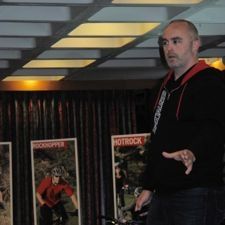SNOWBIRD, UT (BRAIN) Tuesday July 17 2012 6:16 AM MT—Here’s an idea on how to handle those pesky Cat. 4s who come to your store seeking sponsorship: Ask them if they’re ready to volunteer their time to help out at the store in exchange for bikes, parts or apparel.
It was a suggestion Donny Perry tossed out to more than 100 Specialized dealers packed into a conference room at this Utah ski resort. Needless to say, it prompted a few laughs.
But Perry, Specialized’s in-house management trainer, said dealers should think about sponsorship as a business proposition; it’s not a charity.
“Sponsorship—that’s a business partnership. I give you $1 and I want to earn $1.25. “I want that rider to understand my brand (the store) and its position in the community,” Perry added.
While it’s one thing to ask for 50 volunteer hours, it’s another thing to put them to work. And that led Perry to his next point. Let them take your customers out for test rides. “Put them on your best bike, kit them out, and tell them to take customers out on a nice safe road,” he quipped.
Among other suggestions, he urged retailers to re-examine the hours they keep their stores open. In general most stores open too early and close too early. Retailers should take a look at what stores like REI are doing. Open at 10 a.m. and stay open to 9 p.m. Studies show that customers spend more money between 5 and 9 p.m. than at any other time of the day.
Develop checklists for staff. For example, are sales staff also selling helmets, water bottles and other accessories with every bike. “It’s a simple idea but it gets great results,” he said.
Perry, a former Chicago bike messenger and retailer, has been giving presentations at Specialized for four years and he’s mastered the style of an engaging motivational speaker. To succeed at retail, he points out, dealers need to think analytically not anecdotally.
Perry pointed out that in the year 2000 there were 6,195 storefronts in the U.S. Ten years later that number fell to 4,256. Ridership as measured by the National Sporting Goods Association also fell from 43.1 million to 39.8 million people who said they had ridden their bikes at least six times during the year.
“What’s happened is we’ve lost 32 percent of our stores, but sales have been steady. The pie didn’t get bigger, but each of you got a bigger slice of the pie,” he said, even as ridership fell 8 percent. At the same time the average unit-selling price also increased.
“I don’t want to come back here in eight years and find only half of you here,” he said.


